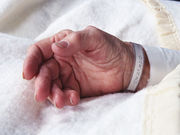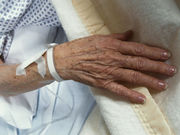Tag: Hospices
Few Hemodialysis Patients on Medicare Enroll in Hospice
Patterns of use, timing of hospice similar among patients with diverse spending trajectories
Quality of Perceived Hospice Care Varies by Setting
Family members perceive hospice care received at nursing homes to be of lower quality
Variation Seen in Hospice Use for Malignant Glioma
Differences by race, sex, age, level of education, urban versus rural residence identified
Three-Quarters Receiving ‘End of Life Option Act’ Drugs Take Them
Common reasons for pursuing California's EOLOA are not wanting to suffer, not being able to enjoy life
Short Duration of Hospice Seen for Seniors at End of Life
Presence and number of restricting symptoms and disabilities linked to likelihood of hospice admission
Most Patients With Care Plan Die in Chosen Location
Females, those with poor performance status, and cancer diagnosis more likely to die in chosen location
Blacks, Hispanics Appear to Get Lower-Quality Hospice Care
Caregiver survey finds disparities between minority and white patients
Concerns Limit Hospice Use for Hematologic Oncologists
Almost half of respondents felt that home hospice was inadequate for their patients' needs
Hospitals Vary Widely in Moving Stroke Patients to Comfort Care
Doctors more apt to suggest it sooner for older, white, female, and uninsured patients
Depression, Anxiety Prevalent in Hospice Caregivers
Younger age and poorer self-rated global health are risk factors for both depression and anxiety














